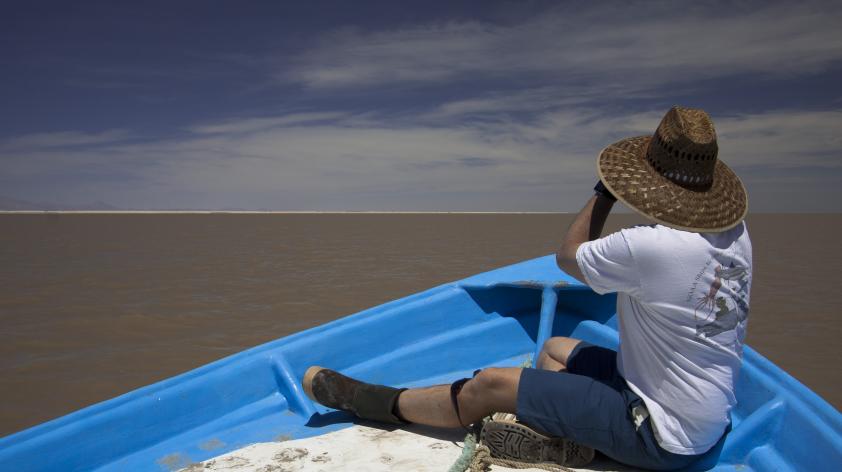
Seafood for Condors?
West of the beaches of San Felipe, Mexico, the peaks of the Sierra de San Pedro Martír rise more than 10,000 feet from the desert. Serving as the backbone of the Baja Peninsula, the mountains push winds that sweep across the desert floor upwards, creating the updrafts and air currents that 39 California condors residing in the Sierra use to traverse the range and beyond in search of food and habitat.
Standing on the shore looking west, the mountains seem impossibly far away and it’s hard to imagine a condor flying all this way in search of a meal. However, condors have made the approximately 35-mile trip before, and as the flock continues to grow, we expect them to do so more frequently.
We suspect the coast is a good place for condors. If present in sufficient quantities, carcasses of marine mammals can provide plentiful foraging opportunities, which should present a low risk of lead exposure, since marine mammals are not hunted.
Such is the case in central California, where condors inhabiting the Big Sur region regularly scavenge the remains of sea lions and other marine mammals that wash ashore. Indeed, other researchers have shown that the more time condors spend feeding along the coast, the less likely they are to be exposed to lead.
But although they are not being exposed to high levels of lead, coastal condors are exposed to other contaminants, like pesticides and industrial chemicals, which sequester in the blubber of marine mammals. Our research group and others have shown that many of these chemicals can interfere with a condor’s hormone systems and compromise fertility.
There are a few questions surrounding the potential future use of the Baja coast by condors. Are there enough marine mammal carcasses to support a growing flock? If marine mammal carcasses are present, do they contain heavy contaminant loads like we see in central California that might pose problems?
Late last April, with collaborators from the National Oceanic and Atmospheric Administration (NOAA) and the Centro de Investigación Científica y de Educación Superior de Ensenada (CICESE), we crammed ourselves in the cab of a fully loaded pickup, and made our way towards San Felipe, Mexico in search of answers to these questions.
For three days we cruised along the shores northward in a panga – a small, open fishing boat – and, to the south, drove the truck along the beaches in search of potential condor meals.
It didn’t take us long to answer our first question.
In some places, the beaches looked like an all-you-can-eat buffet for condors! In short time, we found more than 30 carcasses or skeletons from a range of species, including bottlenose and common dolphins, sea lions, sea turtles and even whales. For each, we noted their location, collected teeth and a muscle sample for age and genetic analyses and from the carcasses that were still relatively ‘fresh’, collected blubber samples for contaminant analysis.
Although we established that there is plenty for condors to eat, we do not yet know if the food is safe. Currently, the blubber samples we collected are in a freezer at CICESE, while we get the permits in order to move them across the border (a process not for the faint of heart).
Once we get them stateside, we will work with collaborators at San Diego State University to identify any contaminants present that could affect condor reproduction. Due to the lack of industrial activity historically in Baja, we don’t expect the marine mammals in Baja to have high contaminant loads like those in California.
However, before condors begin indulging in the feast that awaits them, it would be nice to know for sure. Stay tuned!













